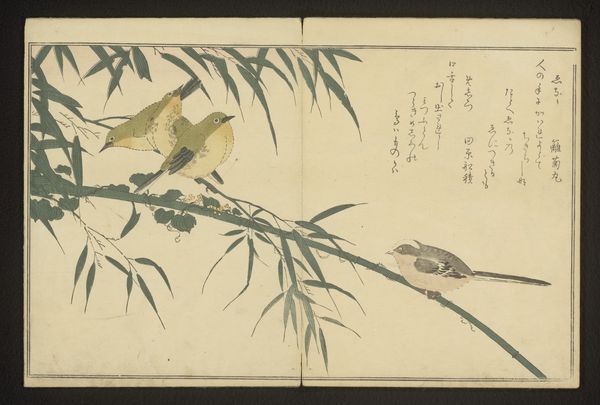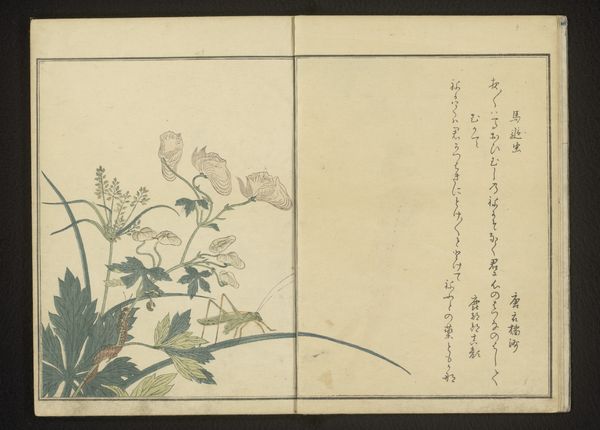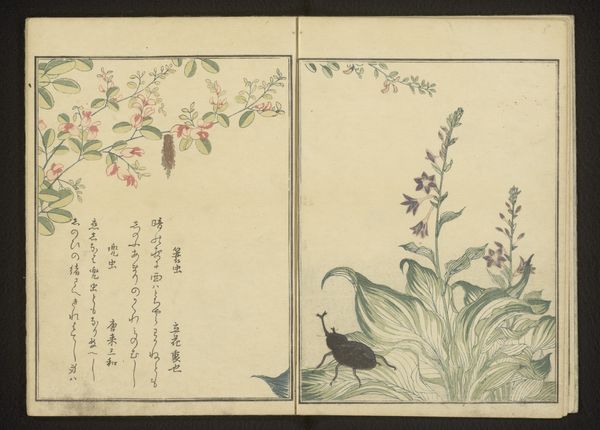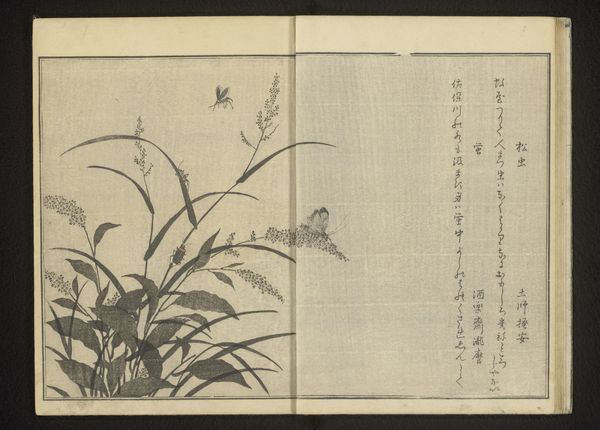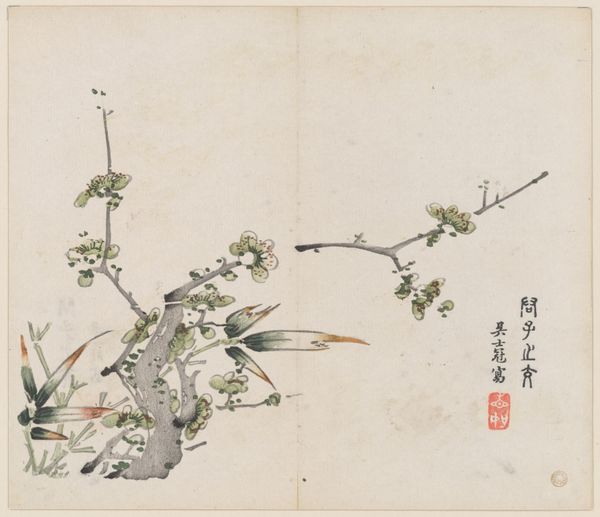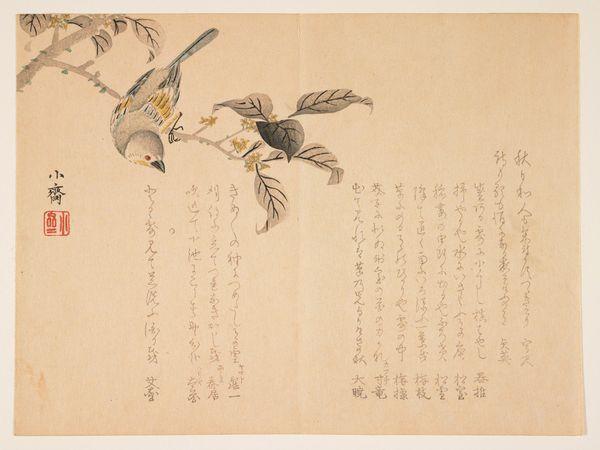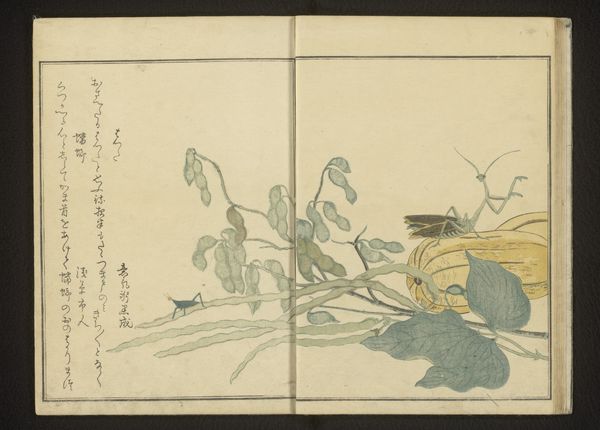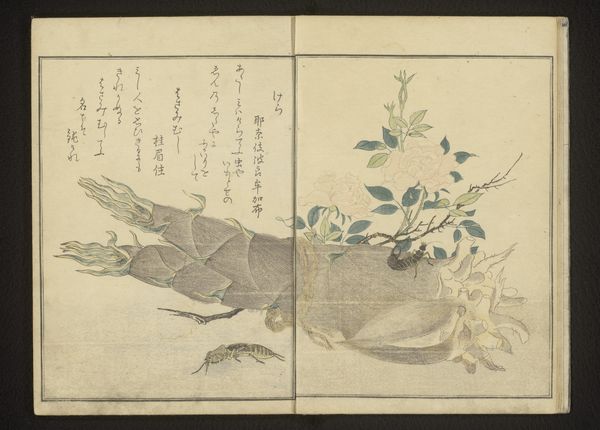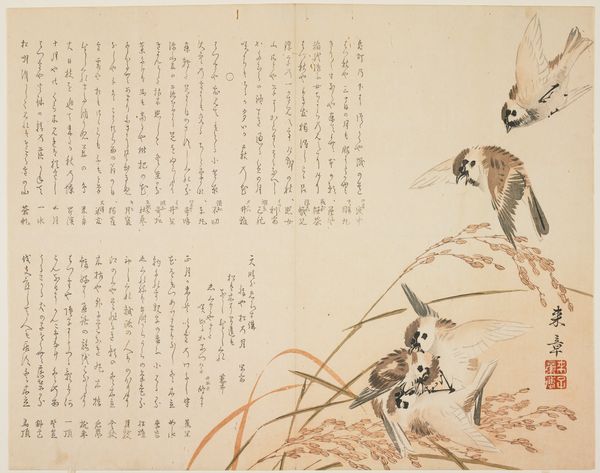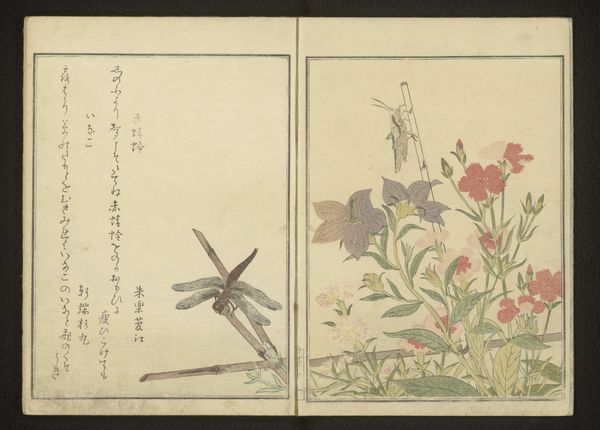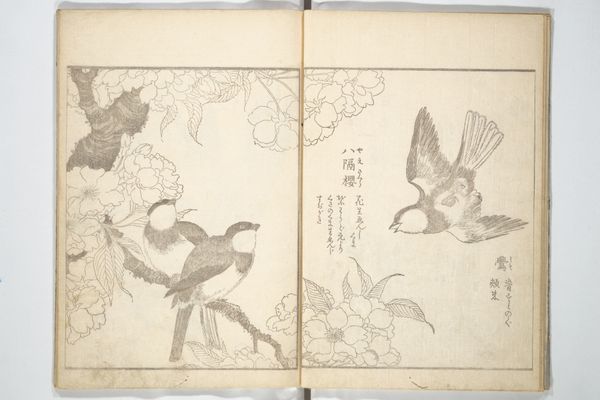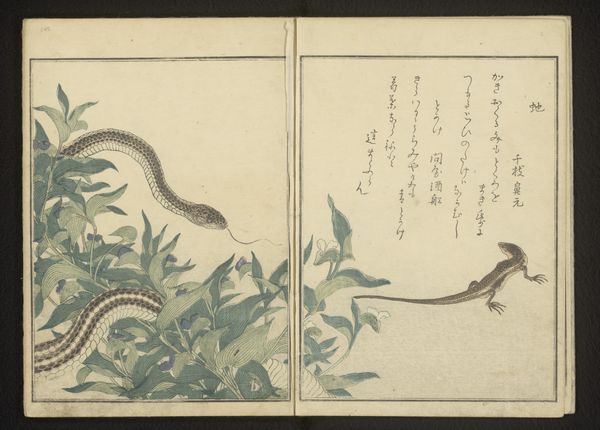
print, watercolor
# print
#
asian-art
#
landscape
#
ukiyo-e
#
figuration
#
watercolor
#
watercolour illustration
Dimensions: height 251 mm, width 187 mm
Copyright: Rijks Museum: Open Domain
Curator: Before us, we have “Mallard and Kingfisher,” a watercolor print by Kitagawa Utamaro, dating from around 1796. It is currently held in the collection of the Rijksmuseum. Editor: What a delightfully serene image. The soft hues and delicate lines create such a sense of quiet observation. The composition, divided almost in half with two avian figures, draws the eye in different directions, creating this subtle tension of balanced subjects. Curator: Indeed. Utamaro's command of line, or lack thereof with the wash technique, constructs the image. Consider the way he suggests form and depth through tonal variation rather than rigid outlines, notably in the Mallard’s plumage, that gives it this impression of soft volume. And how the empty space creates this balance. Editor: Absolutely, and the print medium itself informs the viewing. Ukiyo-e prints, popular in Edo-period Japan, democratized art, moving away from aristocratic patronage to broader audiences. I'd say here we see a perfect capture of the aesthetic values prized in those cultural environments. What's particularly striking is the contrast; the active mallards are placed beside the song bird singing in a rather static way. Curator: The choice of subjects, water birds alongside what appears to be a kingfisher, speaks to Utamaro's acute observation of nature. However, the arrangement moves it past mere replication and elevates the subject to something other. Take for example, the slender reeds next to the two birds contrasted against the weeping branch, which can perhaps be considered the artist’s mastery of design that produces such an image. Editor: Contextually, prints of this nature were often part of larger albums, collected, traded, gifted – visual culture played a huge social role. We ought not underestimate the symbolic dimension either; birds often appear in art representing ideas such as freedom, renewal or even the seasons changing! It adds an important narrative beyond the technical details. Curator: A fitting assessment. In viewing Utamaro’s work, one must equally consider artistic form and cultural placement if we aim to glean what the work has to offer us. Editor: It strikes me as a reminder that what appears visually straightforward is deeply layered with history and artistic choice. A lovely demonstration of how much meaning can be captured with subtlety.
Comments
No comments
Be the first to comment and join the conversation on the ultimate creative platform.
